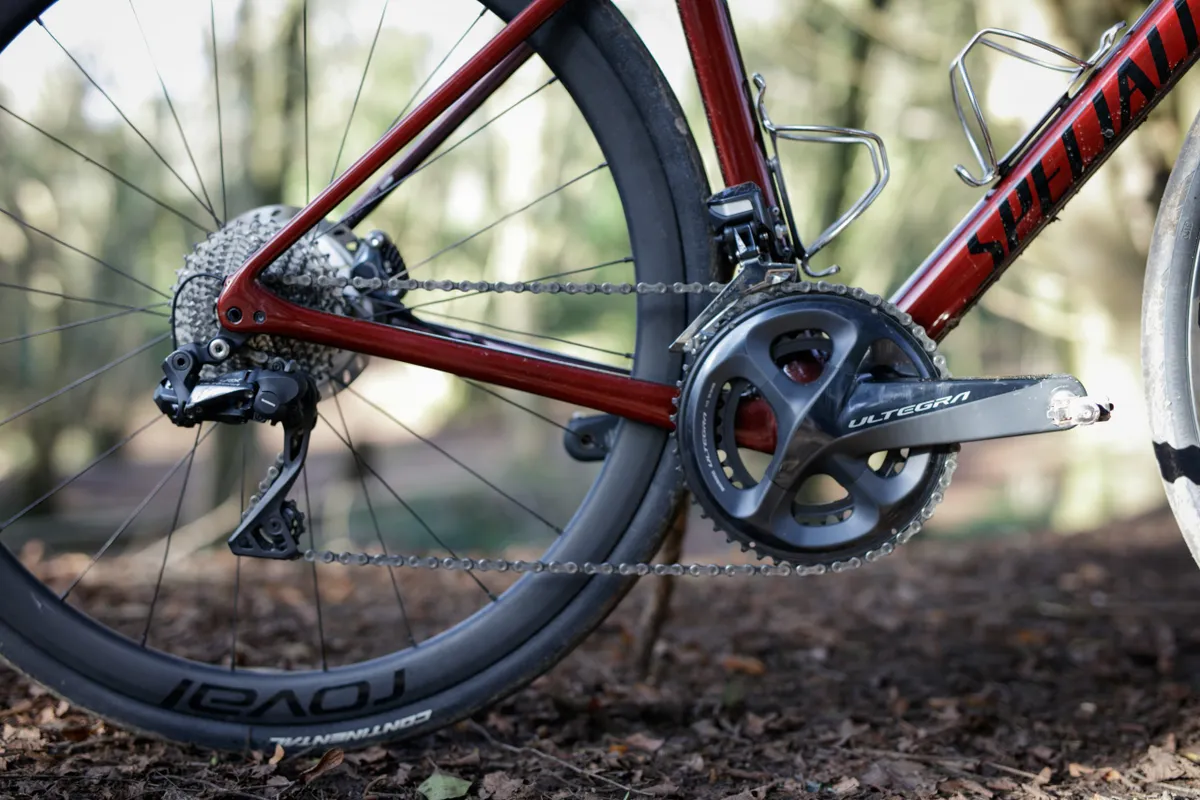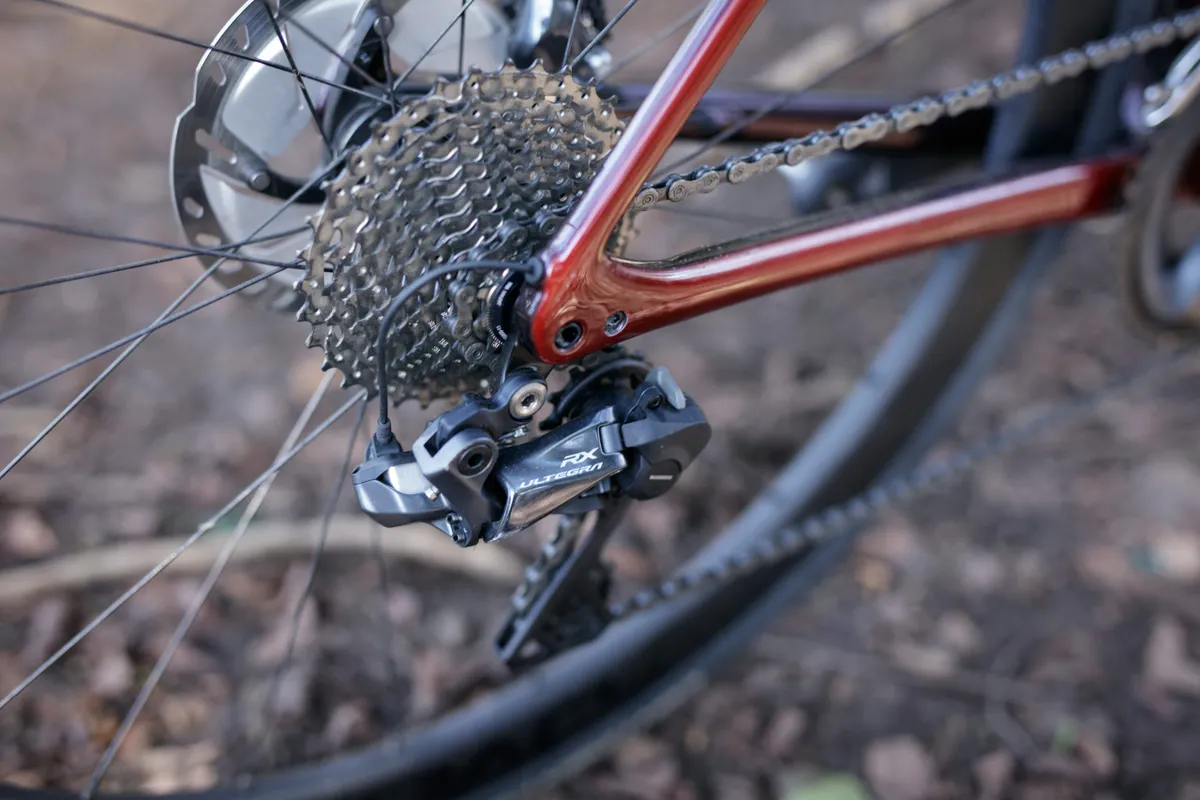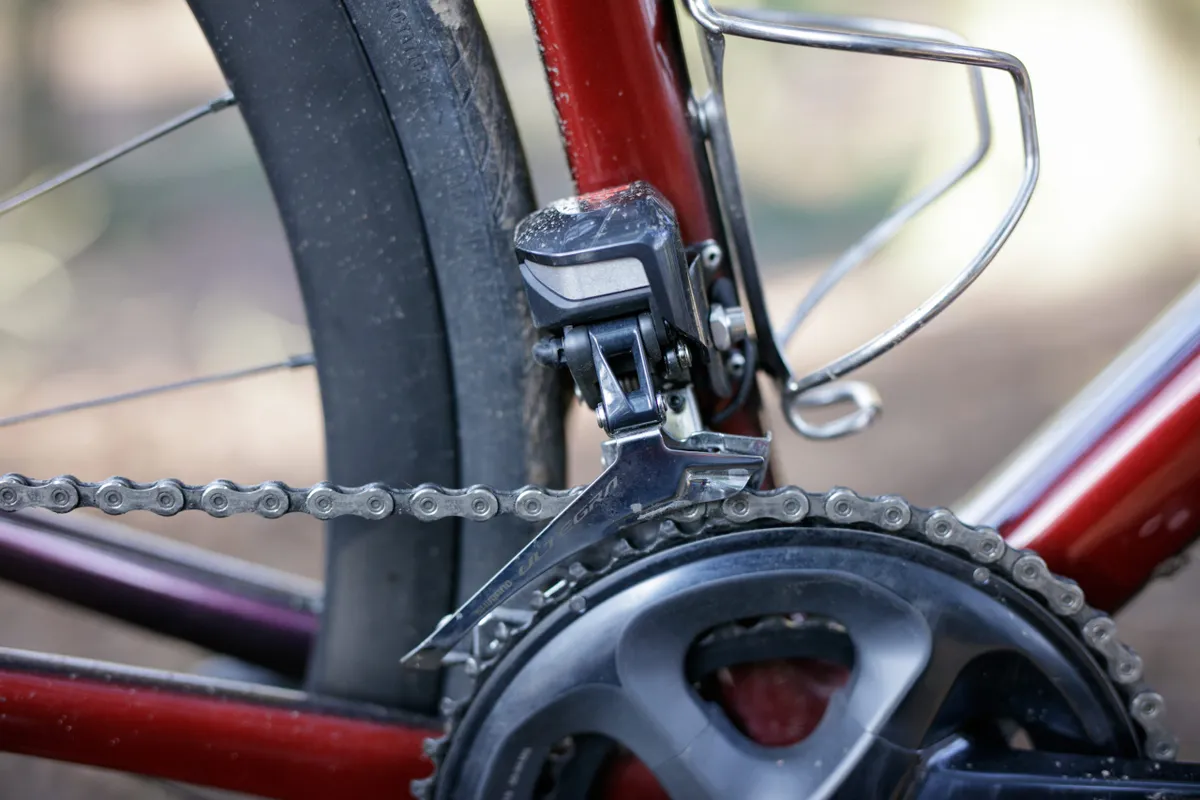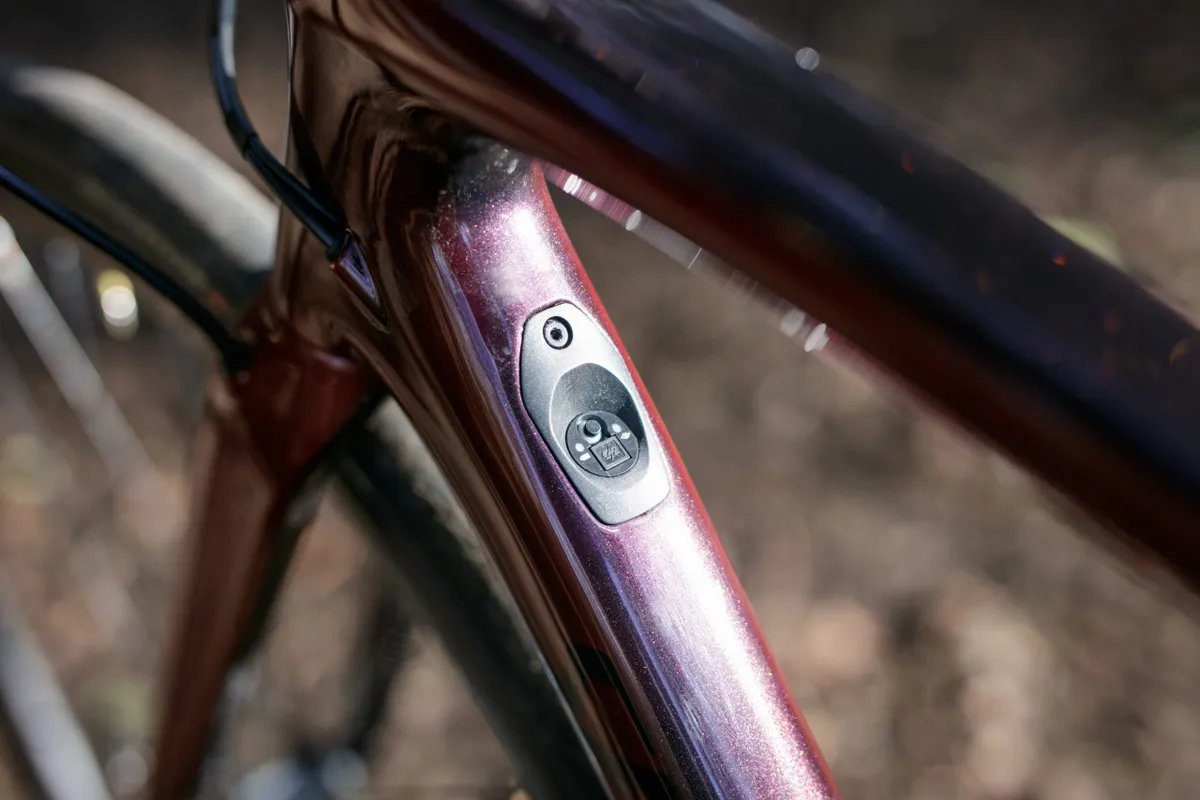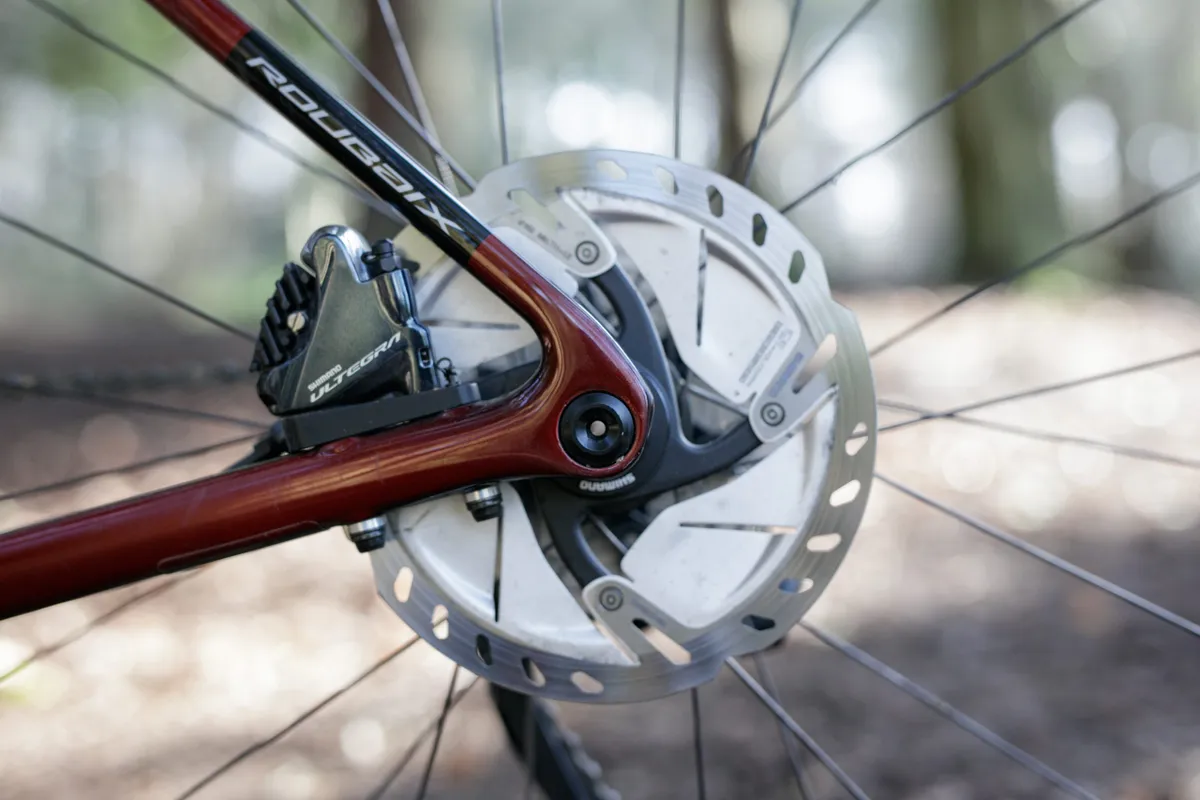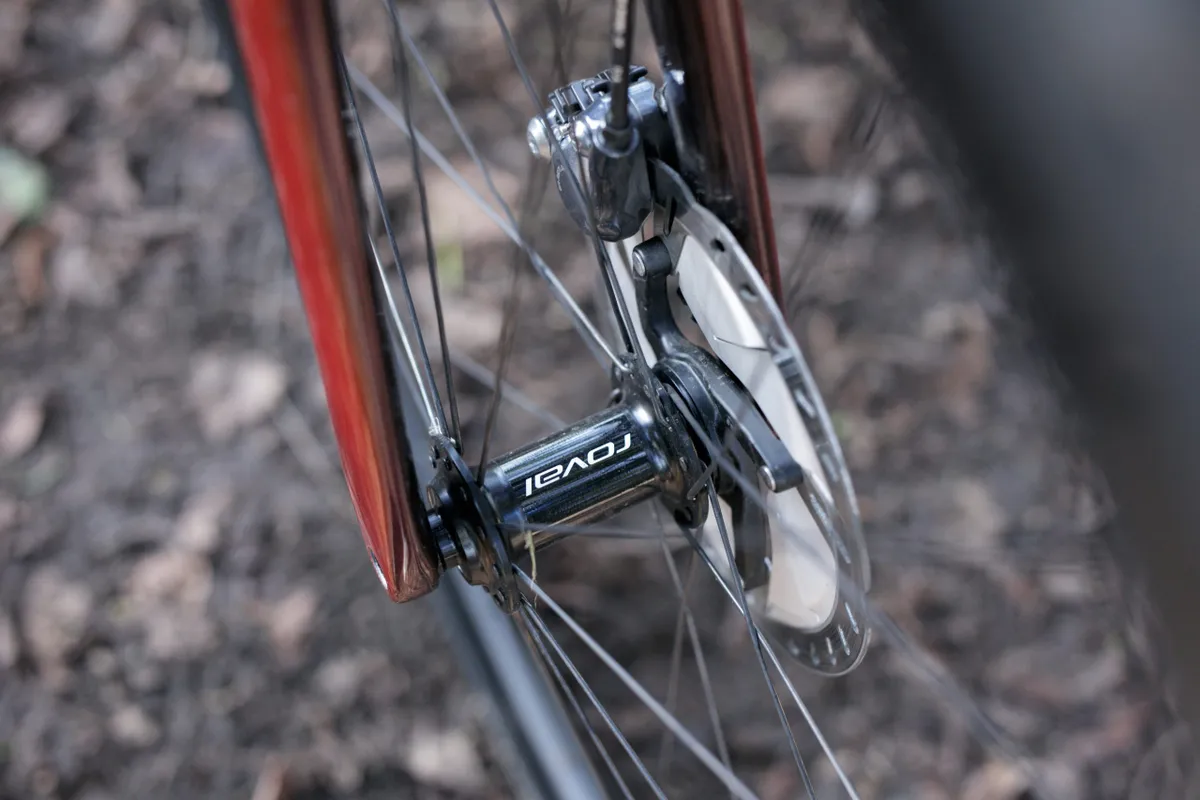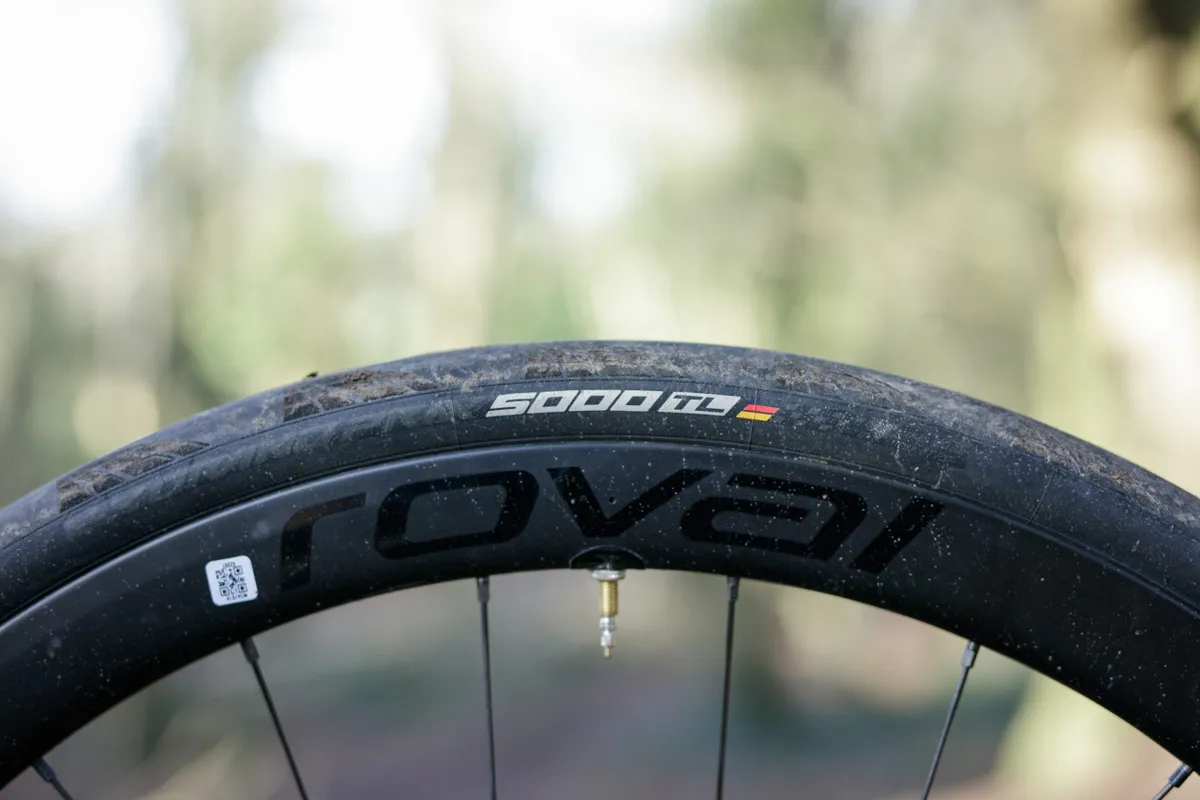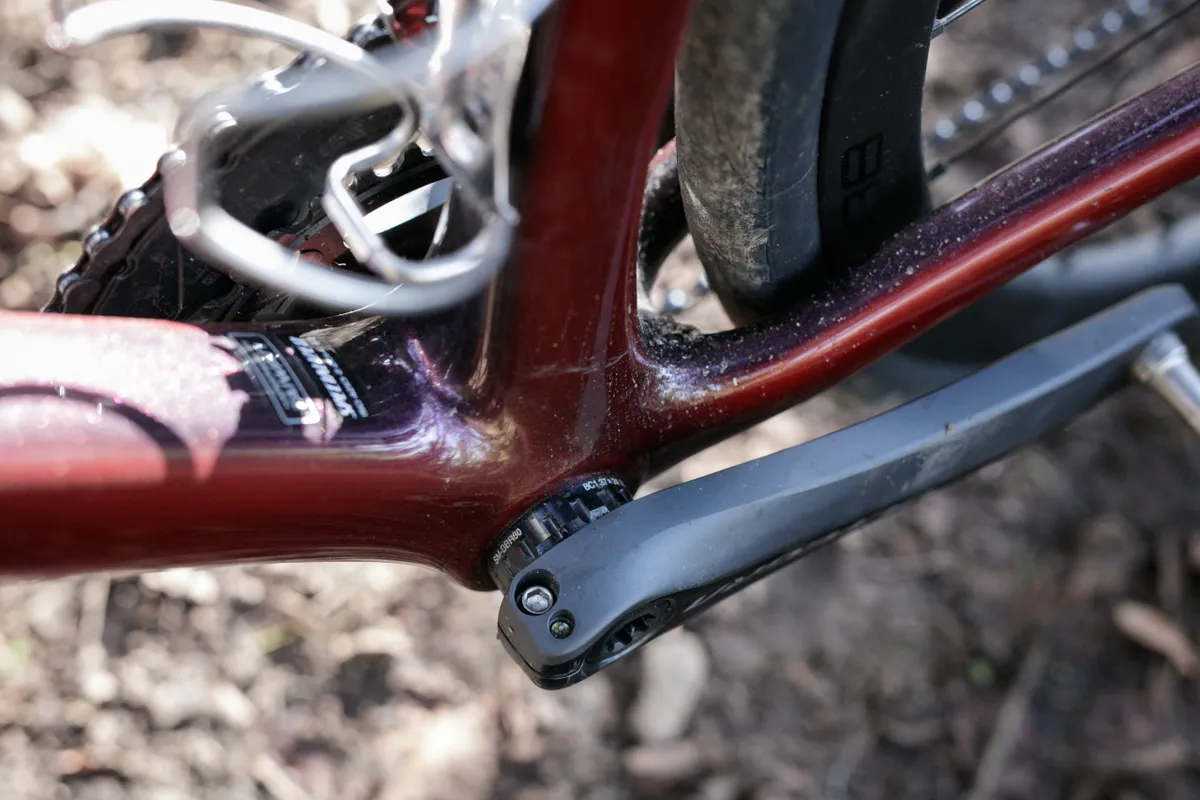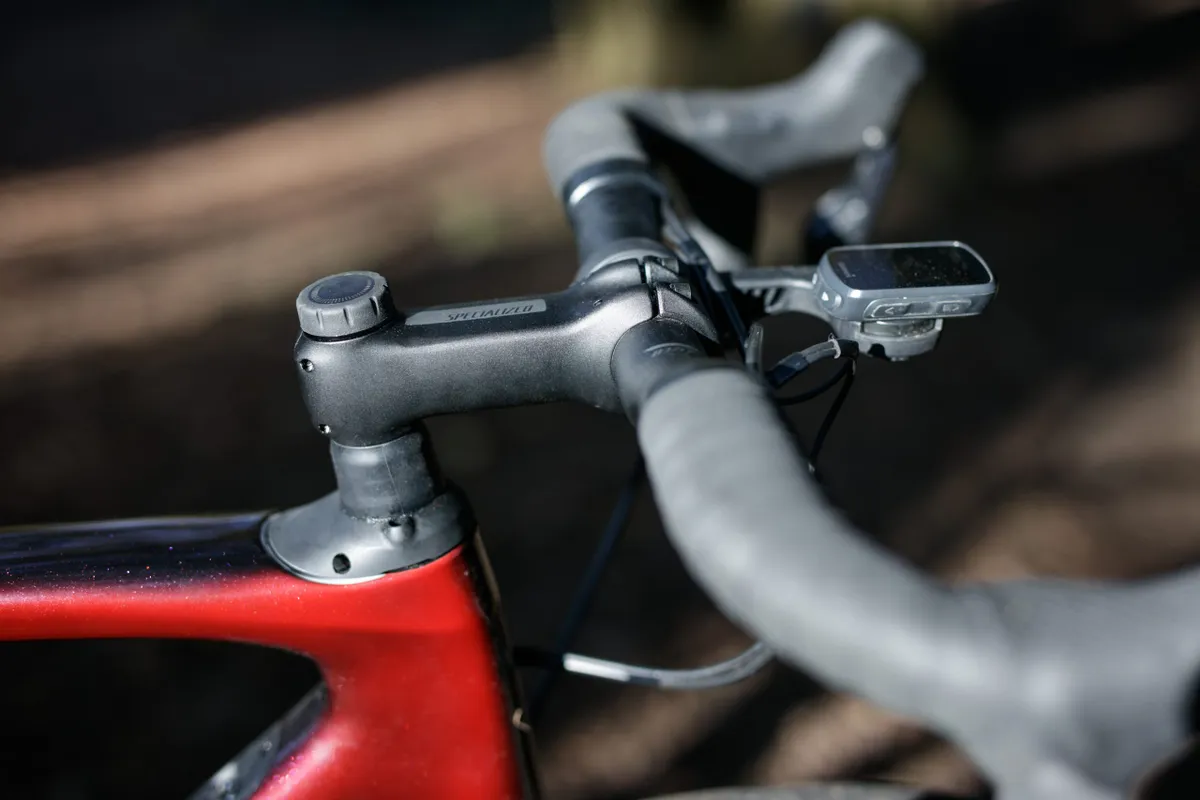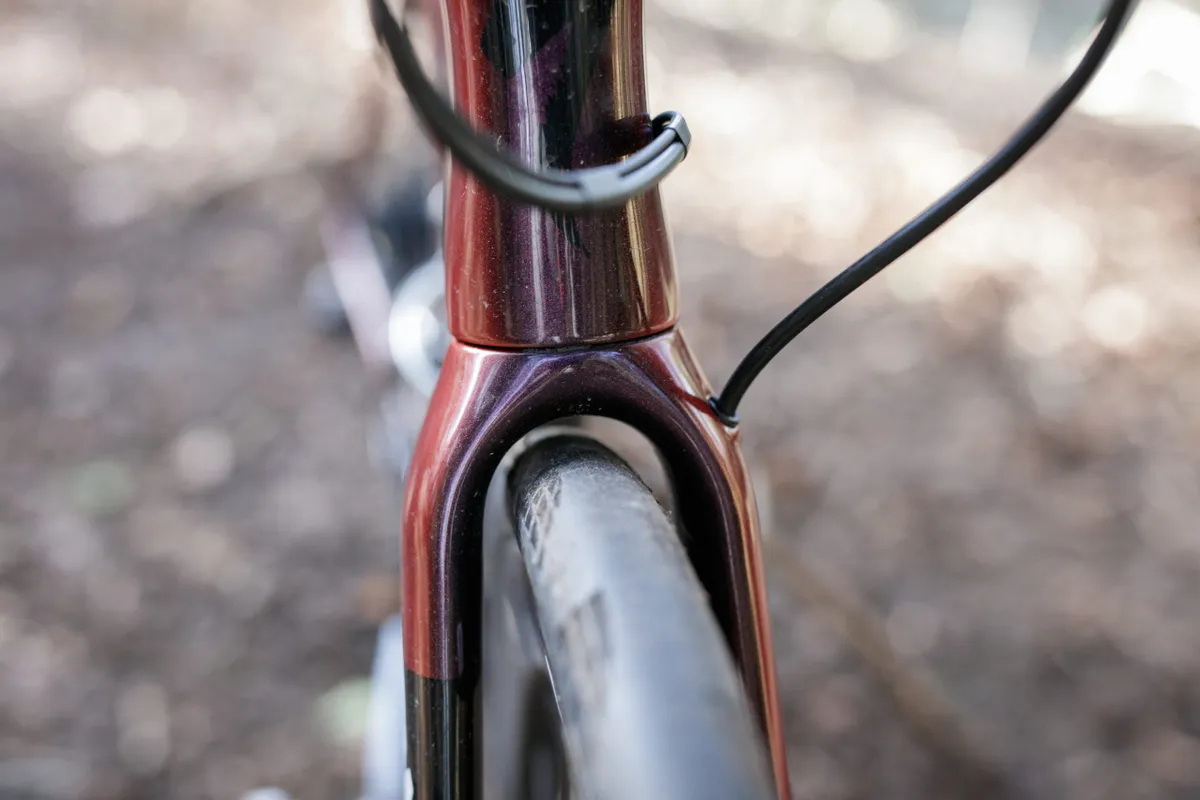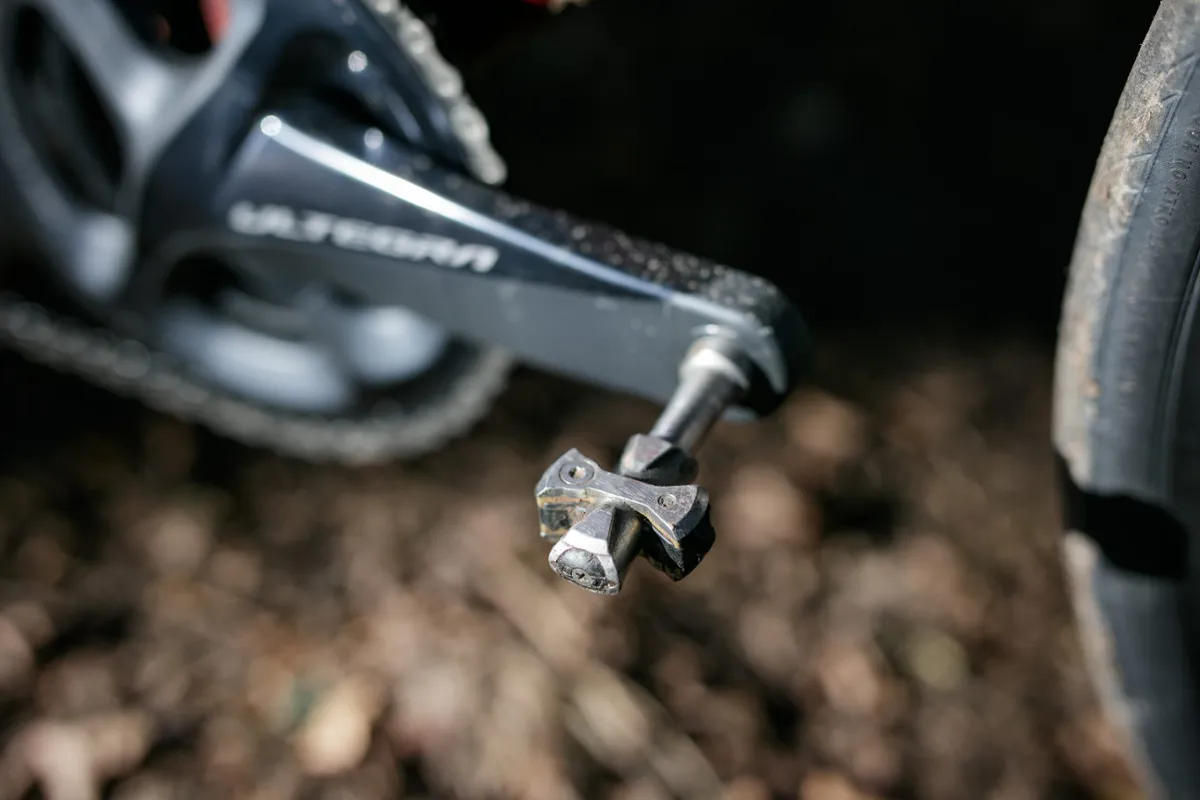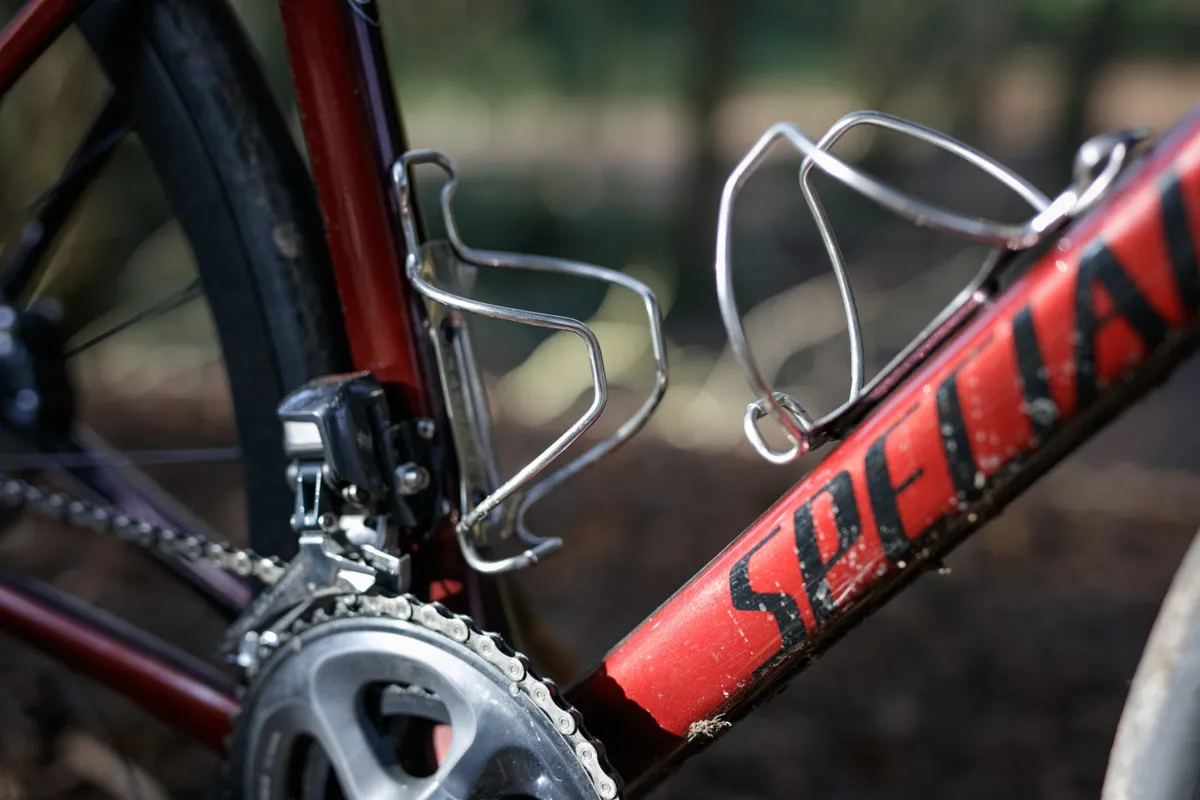The Specialized Roubaix has been a benchmark for endurance bikes since it first appeared in the mid-2000s. The latest model uses Specialized’s Future Shock 2.0 front suspension and, in 2020 Expert spec, it offers a full Shimano Ultegra Di2 groupset and some top-notch components.
The Roubaix is the comfier, less racy alternative to the Tarmac, although Specialized does also offer a Team version of the S-Works Roubaix frame with more aggressive geometry.
The Roubaix Expert is an expensive bike by any objective measure, but it’s vastly more affordable than the halo S-Works model.
As a fan of the old Tarmac, I’ve had a fantastic time with its bouncier sibling in 2020. Read on for full details of my experiences with the bike including video and lots of photos. Newer updates appear first.
Specialized Roubaix Expert long-term review conclusions
It’s time to wrap up my long-term review and, if you haven’t already worked this out, I love this bike.
Recent rides have been back on the feathery DT Swiss Mon Chasseral wheelset and I’ve fitted an old set of clip-on SKS mudguards to keep the filth under control, but otherwise I’ve not made any significant spec changes.
Roubaix vs. Diverge: the other Future Shock 2.0
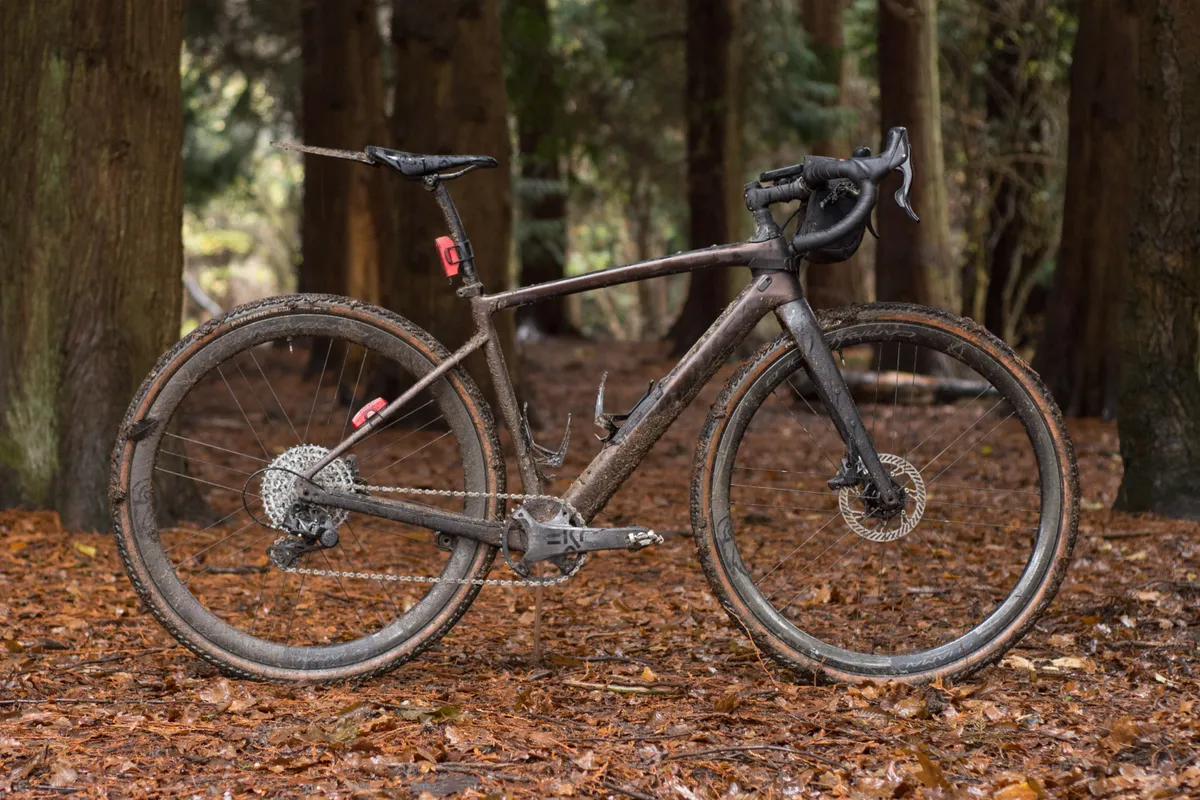
I recently had the opportunity to ride the current Specialized S-Works Diverge gravel bike because Campagnolo lent me one as a testbed for the new Ekar gravel groupset.
Like the Roubaix, the Diverge has a Future Shock 2.0 but, according to Specialized, the spring is stiffer on the Diverge to better suit riding on rough surfaces.
This sounds a little counter-intuitive, but my understanding of this is that the stiffer spring would reduce the tendency to bottom out over bumps, which is obviously more likely when riding off road than on.
I haven’t done a true like-for-like comparison because the builds are quite different, but it was noticeable that the Diverge’s Future Shock seemed to bob less during standing efforts, while still doing a remarkably good job of reducing fatigue levels on rough terrain.
Of course, the Diverge has significantly larger tyres (38mm) that run significantly softer (30-something psi), so that’s a factor too – it might be that with road tyres it would be detectably firmer than the Roubaix.
Given that the Diverge offers almost all the excellent qualities of the Roubaix, but also has the bonus of mudguard mounts and SWAT in-frame storage, it’s dangerously close to being my ideal bike.
A Diverge with slightly more road-oriented tyres might be exactly that.
Specialized Roubaix Expert highs
The Roubaix Expert has opened my eyes to the possibilities suspension on road bikes offers, and also helped evolve my attitude to endurance, all-road and gravel bikes.
I’m a fan of gravel bikes in general, however for the riding I do, I feel like many of them lean too heavily towards trying to be a mountain bike with drop bars and, as a result, they’re just too compromised for the road.
The Roubaix pulls off the neat trick of being a road bike that can do so much more than just ride on tarmac.
With squishy tubeless tyres and that Future Shock, it’s one of the most versatile bikes I’ve ridden in years and, critically, it’s loads of fun.
The Expert spec leaves very little to be desired. I noted in a previous update that the things that make the bike expensive (Di2, carbon wheels) are nice to have, but they’re not the reason the Roubaix is so good – that’s down to the underlying frameset.
The current Roubaix Expert is £400 cheaper than my version at £5,000, but it drops the carbon wheels in favour of alloy ones.
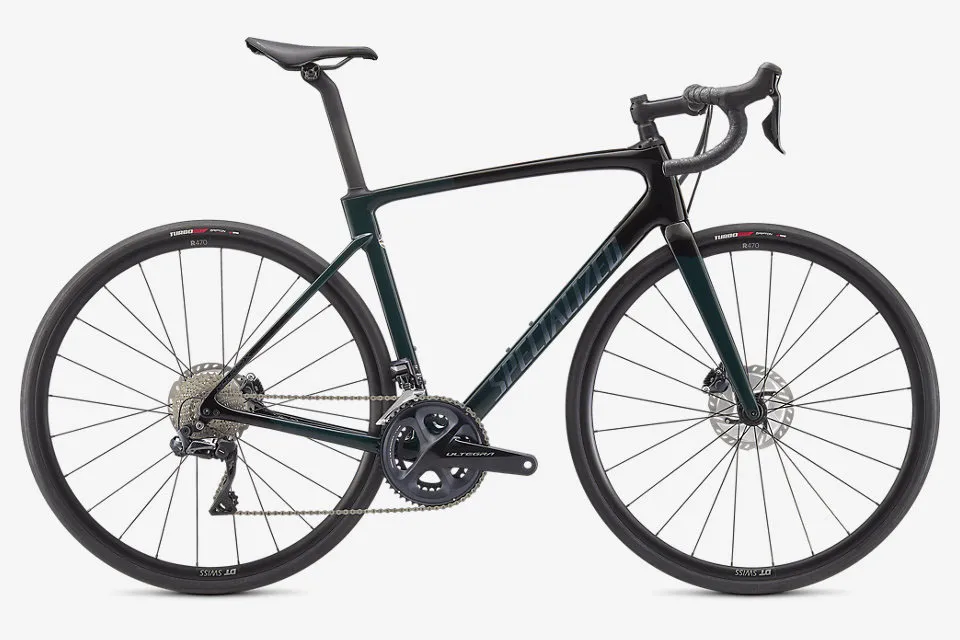
When you consider how expensive carbon rims are, the new bike is arguably worse value despite being cheaper, but I wouldn’t let that put you off.
In any case, we’re seeing significant price rises above inflation across the industry, so the latest pricing is hardly a surprise.
Specialized Roubaix Expert lows
Breaking the Future Shock (see below) was a definite low point, and that was completely my fault. Saying that, the system’s adjustment knob doesn’t seem hugely robust.
My colleague Jack recently reviewed the Specialized Diverge Carbon Comp and learned that the shock’s incremental adjustment points are just there for feel – in reality it’s essentially on or off. Given that, I can’t help thinking a simple two-position switch would make more sense.
What else? Well, this bike should have mudguard (fender) mounts. You’re probably bored of me saying this, but I can’t think of a good reason why a bike like this shouldn’t at least have the option to fit proper, full-length mudguards for year-round riding.
Oh, and the cable routing isn’t the prettiest, and can get in the way when you’re running a bar bag.
Given the trend towards cleaner cockpits, I’ll be surprised if the next generation Roubaix doesn’t go more integrated, although of course that does come with the downside of greater mechanical complexity.
Specialized Roubaix Expert long-term review final verdict
I don’t say this lightly, but the Roubaix Expert is an outstanding bike, one that’s opened my eyes to all kinds of riding possibilities and that I’ve enjoyed immensely.
It’s far from cheap and I’d change minor details if I could, but I can honestly say it’s one of my all-time favourites, and I’ve ridden a hell of a lot of bikes.
Previous updates continue below.
Specialized Roubaix Expert long-term review update four
I’ve been riding the Roubaix for almost a year and it’s fair to say it’s got under my skin. I ride a lot of different bikes in my job and it’s been a delight to bond with one properly for a change.
I genuinely think the Roubaix is an exceptional bike and I’m going to miss it terribly when it goes back.
I recently took the time to commit my feelings about the bike to (digital) celluloid, so make yourself a hot beverage and enjoy (?) 17 minutes and 49 seconds of a malnourished street urchin waving his arms around in the woods.
Long-term ownership prospects
If you’re considering dropping over five grand on a bicycle, you might well be wondering about long-term costs.
Unlike most road bikes, the Roubaix has suspension, and that means an extra set of moving parts that could potentially wear out.
The Future Shock 2.0 is not designed to be a rider-serviceable unit and, as such, there’s not really any day-to-day maintenance to carry out.
Specialized quotes a nominal 500-hour service life, but it wasn’t immediately clear to me what happens when you hit that number, or how much replacement might cost a rider who, say, broke their Future Shock (see "initial setup" section below).
To find out, I called Certini of Bristol, a nearby Specialized Concept Store, and the very helpful chap on the phone told me that while they hadn’t yet had to replace any Future Shock 2.0s (because they’ve not been around for long enough), it would only cost a regular punter somewhere in the region of £75 to £80 because it’s done on a “service exchange” basis rather than a normal retail one.
If you rode your Roubaix for five hours every week, it would take you almost two years to hit the 500 figure, so that feels pretty reasonable to me.
The future of Future Shock
I’m curious to see where Specialized will take the Future Shock concept next.
The 2.0 unit doesn’t have interchangeable springs and so it can’t be tuned to different rider weights beyond adjusting the damping via the knob.
It works fine for me at the lighter end of the spectrum, but I do wonder if really heavy riders might benefit from a stiffer spring – perhaps Specialized might add interchangeable springs to the 2.0 as well?
Going a bit more sci-fi, an electronically activated damper or lock-out could be incredible. If you could map the controls to the extra buttons on Shimano Di2 levers you’d be able to adjust the shock without taking your hands off the levers.
I’ve no idea if such a thing is feasible or practical, but on a bike that already has electronic shifting it doesn’t feel like too much of a leap, and electronic suspension for bicycles has been around as a concept for quite some time.
Previous updates continue below.
Specialized Roubaix Expert long-term review update three

By the time you read this, the Roubaix will have ticked over 2,000km in my possession and it’s firmly established itself as a favourite.
I’m struggling to think of a road bike I’d rather cover distance on, particularly on mixed surfaces.
The limiting factor for me on long rides lately has been saddle comfort, which has more to do with my own awkward physiology than any fault of the bike. The Specialized Power isn’t half bad, but I’m still on lifelong quest for my holy grail perch.
New wheels and resquishification
I’ve had no issues whatsoever with the Roval C 38 wheels the Roubaix comes with. They’re light enough (1,560g claimed), stiff enough and not too deep section, which suits me because I tend to get blown around like the plastic bag in that scene in American Beauty riding proper aero wheels.
Also, the 21mm internal width is a great match for the 28 and 32mm tyres I’ve been running, giving a really nice round profile and, with the smaller size, a pretty smooth rim-to-tyre transition.
However, I’ve got a set of DT Swiss PRC 1100 Mon Chasseral wheels to test, so I’ve fitted these and at the same time reverted to the 32mm Continental GP5000 TLs I was running before.
The 28mm Schwalbe Pro Ones have proved to be excellent all-rounders, but I’ve missed the extra comfort offered by the fatter Contis.
https://www.instagram.com/p/CBtLTnyF7P0/
The Mon Chasserals are roughly 300g lighter than the Rovals at an actual 1,262g, but they’re also quite a bit shallower at just 24mm deep (vs. 38mm), and narrower at 18mm internal.
The latter dimension matters because it makes them less well suited to wider tyres than the Rovals. In fact, DT Swiss designed these wheels with 25mm tyres in mind, although they’ll work just fine with significantly fatter rubber.
The 32mm Contis take on a fairly pronounced ‘lightbulb’ profile on these rims, but that’s hardly the end of the world.
So are these wheels an upgrade or a downgrade? I guess it’s a bit of both. They do look cool, in an understated sort of a way. They’re also almost criminally expensive at £2,649.99 / €2,948 / $3,734. Look out for a separate review soon.
Charge your damned Di2
When I pitted Ultegra Di2 against its key rival SRAM Force eTap AXS I noted that Di2’s remarkable battery life means it’s easy to become complacent about charging it.
Well guess which idiot did exactly that? [indicates self]
Some weeks (months?) ago I checked the battery and noted that it was in the ‘flashing green’ mode, which means there’s at least 50 per cent battery remaining.
I made a mental note to top it up and promptly forgot all about it. This led to the battery dying at around 25km from home on a recent ride, to my immense frustration.
When a Di2 battery drops below 10 per cent, you lose front shifting first, and the system left me in the 34t little ring.
Di2 is also designed to prevent extreme cross chaining, meaning you can’t use the two smallest cogs on the cassette when you’re on the smaller chainring.
As a result, I had to make do with a not-so-high gear of 34/15 for the remainder of my ride. There was a lot of coasting and swearing. Lesson learned, I hope.
Previous updates continue below.
Specialized Roubaix Expert long-term review update two
Over the last few weeks, the Roubaix has been been my go-to for lots of short lockdown rides before work, and slightly longer outings at the weekend with frequent gravel diversions.

Changing tyres (again)
I absolutely loved the 32mm Continental GP5000 TLs I fitted initially and I think they might be my new favourite tyre.
Once upon a time I’d have scoffed at the idea of 32mm tyres on a road bike, but with the state of our roads and my predilection for gravel detours, they actually make a lots of sense.
However, I have a set of 28mm Schwalbe Pro One TLEs that need testing, so I’ve put these on for now.
The Schwalbes averaged 264g each on my scales, making for a total saving of over 200g versus the chunky Continentals.
Having now ridden them a fair bit, my subjective impression is that the narrower tyres are slightly less comfortable on our terrible roads, but not noticeably faster.
The Pro Ones handle light gravel just fine, but their narrower width naturally means they feel a little bit sketchier.
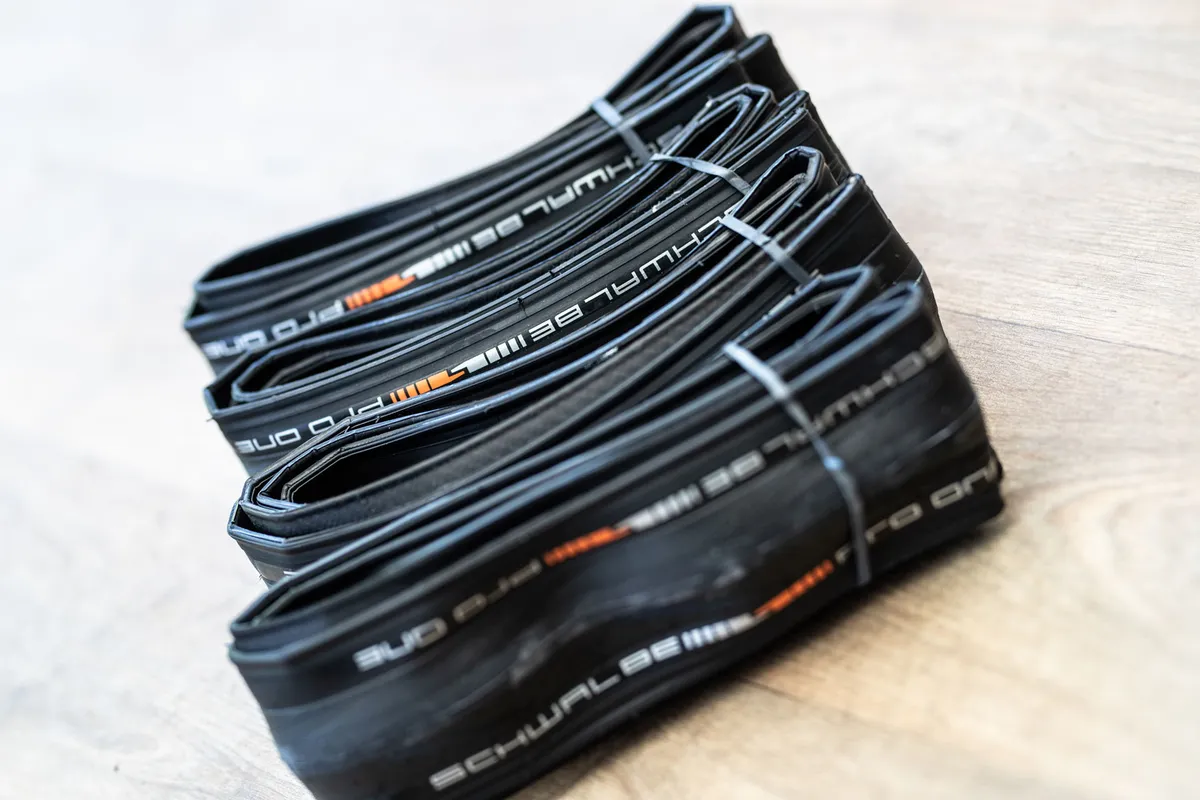
The nice thing about running tubeless is that I’ve got a huge amount of latitude when it comes to pressures.
I’ve run the Pro Ones as low as 40psi front / 50psi rear without ill effect, although after experimenting a little I’ve found I’m happiest around 50psi / 60psi, or just under.
If I were running tubes, I’d likely want at least 10psi more front and rear because of the risk of pinch flats.
Is the Future Shock a panacea?
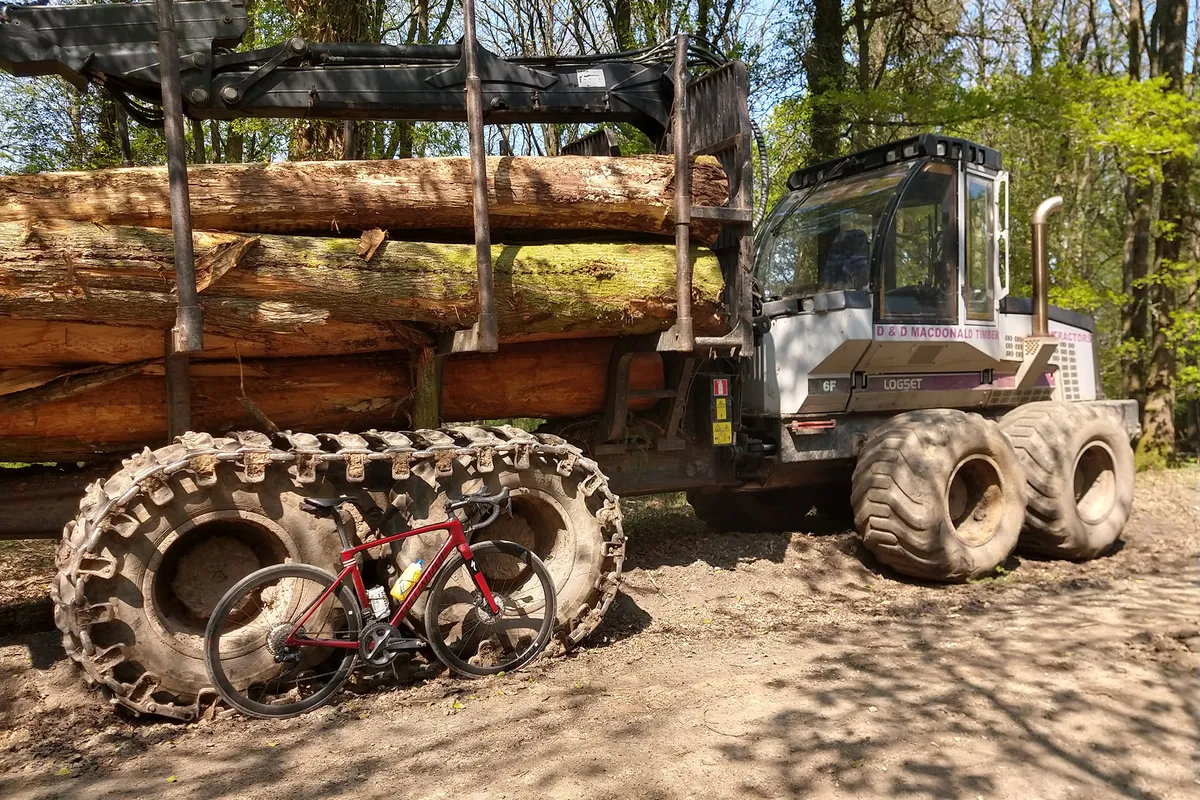
I’ve been thinking hard about whether a Future Shock style design is a solution for all road bikes.
I’ve been hugely impressed with the system on the Roubaix, but there are some caveats to my praise.
For general riding, I’ve been very happy to leave the shock’s adjuster in the fully ‘open’ position, which gives me the most squish.
Riding along bumpy surfaces, the constant flexing of the shock’s cover lets you know it’s doing its job.
There is significant movement in the bars when you’re out of the saddle but I’ve found that, in the course of normal climbing and quite spirited descending, this doesn’t bother me, the bike still feels accurate and predictable.
The one time the movement is perhaps counterproductive is when you’re really pushing hard, for example sprinting out of the saddle with your hands on the drops.
In this scenario, you’re cranking hard from side to side, and the extra movement of the shock can make the front of the bike feel slightly more wayward.
You can lock out most of the movement by cranking the adjuster right down, which noticeably sharpens up the front end. Of course, you have to remember do to this in advance of launching your sprint.
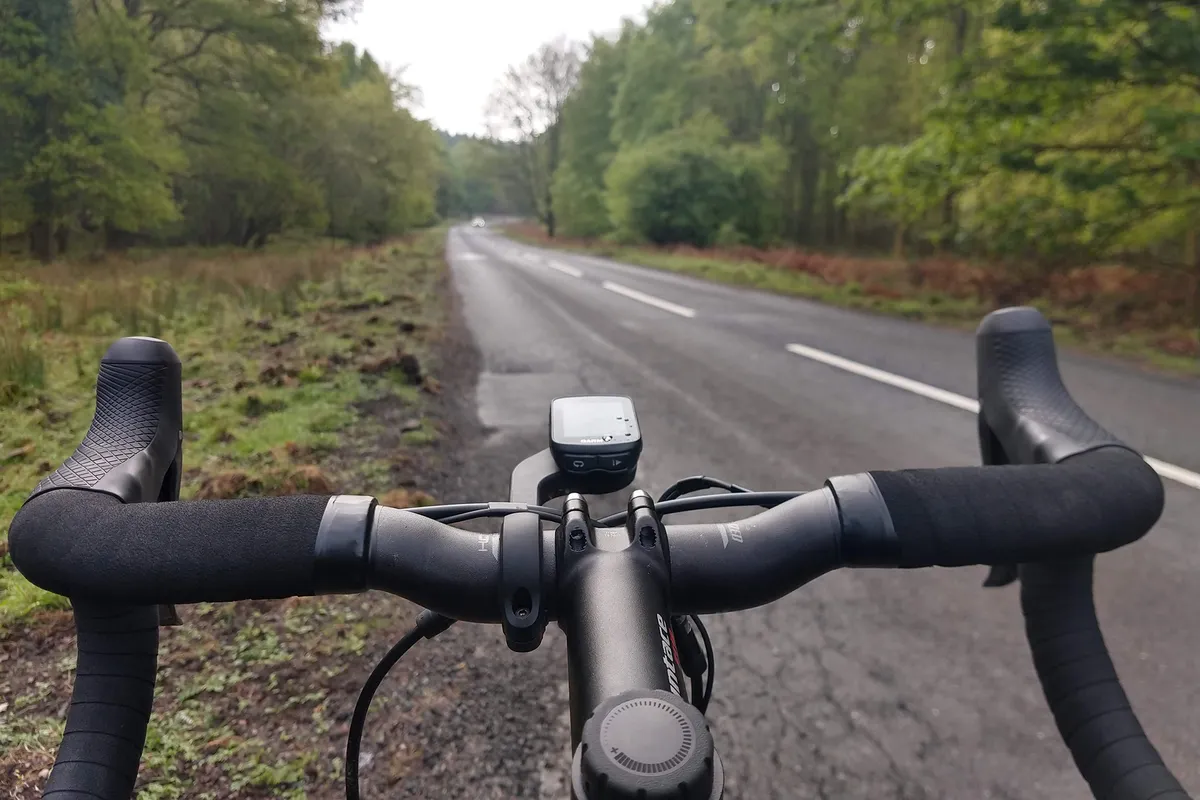
For this reason, I’d say that if you have any intention of riding competitively on a Roubaix, you’re going to want one of the models with an adjustable Future Shock.
The rest of us (myself included) are likely to be satisfied by a non-adjustable one – the adjustment falls into the category of ‘nice to have’ but not essential, and it’s perfectly feasible to ride all of the time with the shock fully open.
Relatedly, I made a mistake in my original story on this bike when I said it was possible to change to a softer or harder spring. With the adjustable Future Shock 2.0, you can’t change springs, while the Future Shock 1.5 (which Specialized calls “non damped”) found on cheaper models has no adjuster, but comes with a choice of three springs.
Previous updates continue below.
Specialized Roubaix Expert long-term review update one
Swapping stems
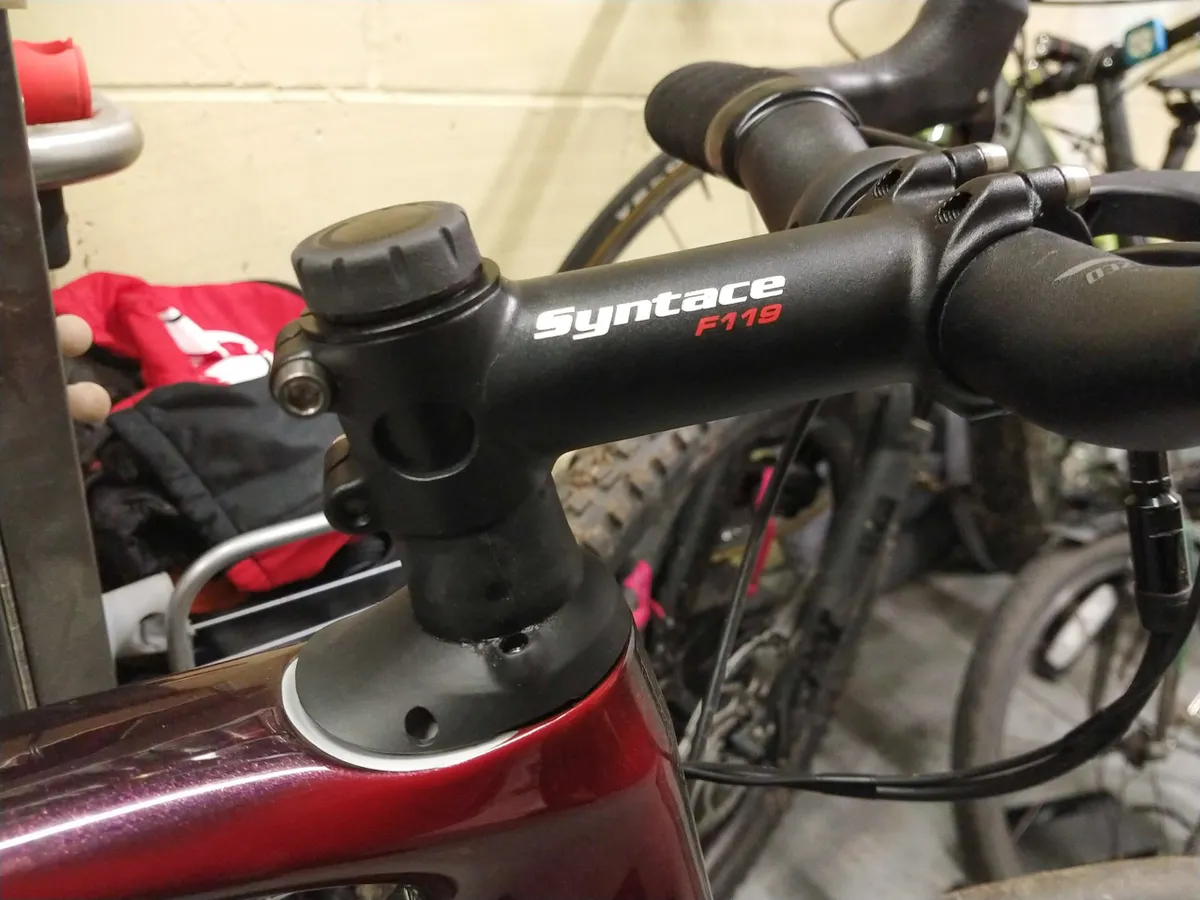
Specialized provided me with a shim that adapts the skinny Future Shock steerer to work with a standard 1 1/8in stem, so I duly went rummaging in my box of stems and dug out a 110mm Syntace of unknown provenance to give the Roubaix an extra 10mm of reach.
As it happens, this stem is one that works with 1 1/4in steerers but comes with a shim of its own to fit 1 1/8in, so I’m now running a double-shimmed setup, which is almost certainly not something any manufacturer would endorse.
Even more upsettingly, it looks kind of terrible because of the awkward transition this creates from the Future Shock adjuster knob to the stem, but so be it.
Jumping on the bike I was immediately more comfortable, although I might yet go even longer with a 120mm stem to help stretch out my lower back. This will also look pro as hell, which is obviously what matters most.
Multimodal maketh the man
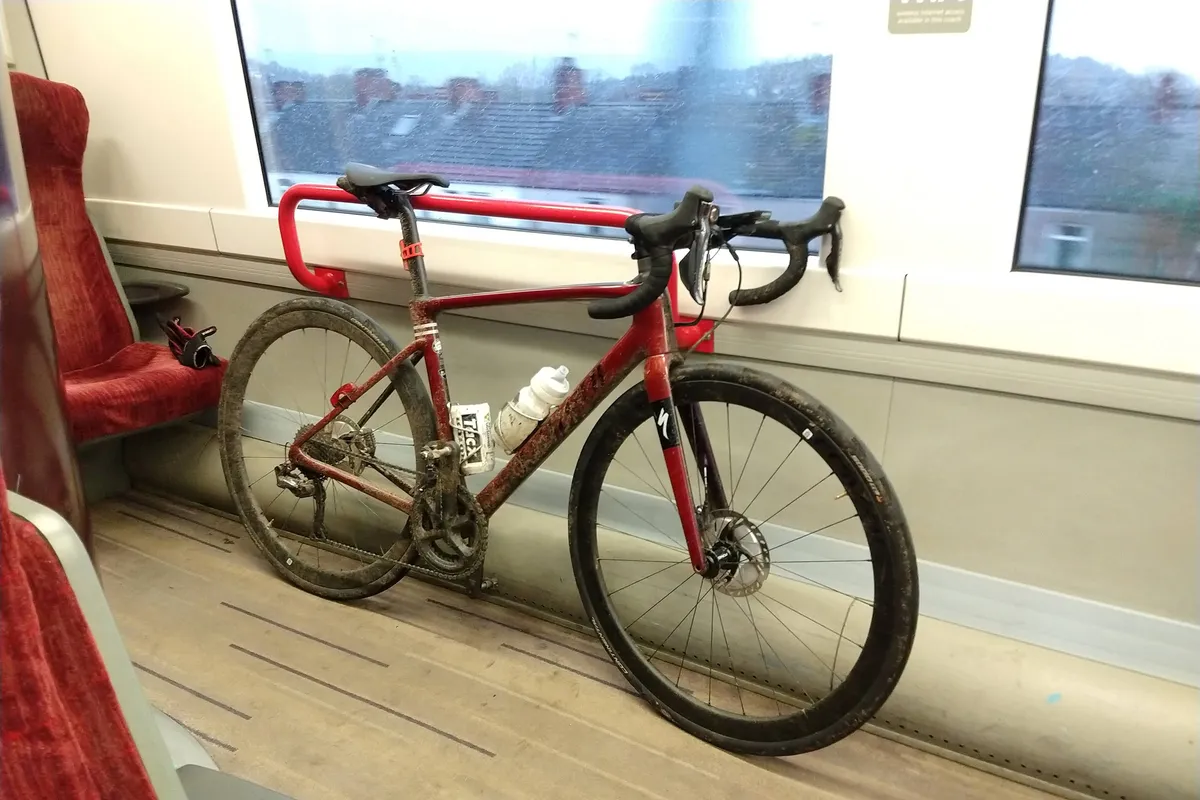
My cycling New Year’s resolution was to attempt some multimodal rides, by which I mean ones that take me somewhere else rather than ending where they started, relying on trains to get me home.
I finally did such a ride on the Roubaix, heading west from the Forest of Dean to Abergavenny before turning south.
I’d originally planned to ride further west into the Brecon Beacons, but I cleverly chose to do this ride on an exceptionally windy day (there have been a lot of these lately), with the breeze against me for the whole of my A to B ride, and neither the legs nor the enthusiasm were there.

Instead, after a pleasant cafe stop in Abergavenny, I hopped on the canal path and got extremely muddy, sliding around on my slick tyres and ducking under low bridges every few hundred yards.
After clambering through the branches of a tree that had blocked both the canal and the path, I stupidly decided to get on the road for a change of scene, and spent a very unpleasant half-hour or so riding on a dual carriageway down to Cwmbran (home of the Jammie Dodger biscuit) where I caught a train home.

The ride wasn’t an unqualified success, but the sense of purpose riding to a destination gave me made it far more enjoyable than my usual loops.
With its blend of comfort and speed, I can’t think of a bike better suited to days like this than the Roubaix.
Original article below.
Specialized Roubaix Expert specification and details
The Roubaix Expert with Shimano Ultegra Di2 shares its FACT 10R carbon frame with the SRAM Force eTAP AXS-equipped Roubaix Pro (costing £1,000 more in the UK) and several more affordable models too.
It sits one rung below the S-Works bike that starts at a mind-bending £4,100 more in the UK, and gets a top of the range FACT 11R frame.
I tried to pin down Specialized on the difference between the top-level and second-tier frames but the brand is intentionally vague on the subject, saying that the key thing is they ride the same as one another.
It was suggested that the FACT 10R frame might be in the region of 50g heavier, but I wouldn’t take that as gospel.
The Expert spec is not ungenerous, featuring a complete Ultegra Di2 R8070 disc groupset, and mid-depth Roval carbon wheels with DT Swiss 350 hubs.
The finishing kit is all Specialized’s own, as are the 28mm Turbo Pro tyres the bike ships with.
A special mention goes to the bottom bracket which, after years of press-fits from Specialized, is a good old mechanic-friendly threaded unit.
The Roubaix’s USP is the Future Shock 2.0, an adjustable coil suspension cartridge housed in the fork steerer that offers 20mm of hydraulically-damped travel, allowing the cockpit to move up and down relative to the frame and fork.
Three springs (soft, medium, firm) are supplied with the bike, and cheaper versions of the Roubaix get the non-adjustable Future Shock 1.5. [Update 23 April 2020: I'm told this is incorrect. The adjustable Future Shock 2.0 does not have interchangeable springs, but the non-adjustable Future Shock 1.5 found on cheaper models does.]
The system is lighter and more compact than a mountain bike suspension fork and it’s designed for smoothing out rough roads rather than taking big hits on rocky descents.
There’s no rear suspension, but the Roubaix’s back-end is built for compliance too, with both the seatstays and the seat clamp dropped below the line of the top tube. This means that it’s not just the visible part of the post that can deflect, it’s actually anchored 65mm below the top of the seat tube.
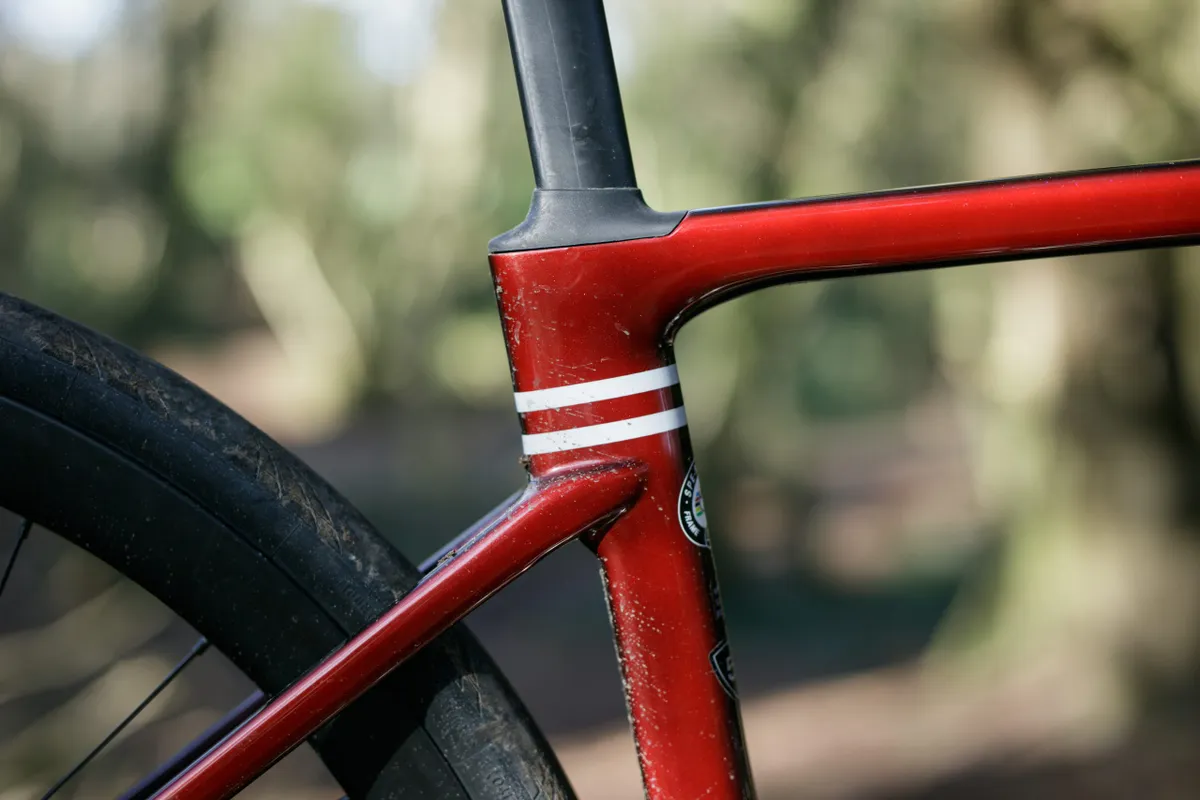
The Roubaix Expert weighs a claimed 7.9kg in standard spec and, ready to ride with chunky 32mm Continental Grand Prix 5000 TL tyres, Speedplay Pavé pedals, Arundel stainless steel bottle cages and a Garmin mount, this 54cm bike comes in at 8.6kg.
This sumptuous paint job is called, take a deep breath now, Gloss Crimson – Cast Berry Edge Fade/Dove Grey/Black. Riders seeking a less assertive aesthetic have the option of two other colour schemes for the Expert model.
Specialized Roubaix Expert full specification
- Sizes (*tested): 44, 49, 52, 54*, 56, 58, 61, 64
- Weight: 8.6kg (including pedals, cages, Garmin mount, Continental GP5000 TL 32mm tyres)
- Frame: FACT 10R carbon, 12×142mm thru-axle
- Fork: Full carbon with Future Shock 2.0, 12×100mm thru-axle
- Shifters: Shimano Ultegra Di2 R8070
- Front derailleur: Shimano Ultegra Di2 R8050
- Rear derailleur: Shimano Ultegra RX Di2 RX805
- Cranks: Shimano Ultegra R8000 50/34t
- Bottom bracket: Shimano threaded
- Cassette: Shimano Ultegra 11-34t
- Chain: Shimano
- Wheelset: Roval C 38 Disc carbon tubeless-ready clincher
- Tyres: Specialized Turbo Pro 28mm stock, changed to Continental Grand Prix 5000 TL 32mm, then Schwalbe Pro One TLE 28mm
- Brakes: Shimano Ultegra disc
- Bar: Specialized Expert Hover 420mm, 125×75mm
- Stem: Specialized Future Stem Pro 100mm
- Seatpost: Specialized S-Works Pavé, 380mm
- Saddle: Body Geometry Power, 143mm, Ti rails
Extras and accessories
- Pedals: Speedplay Zero Pavé
- Bottle cages: Arundel Stainless Steel
- Computer mount: Garmin out-front
Specialized Roubaix Expert geometry (size 54)
The Roubaix is classed as an endurance bike and as you’d expect that means it’s both shorter in reach and taller in stack than the Tarmac race machine, a matter of 8mm and 41mm respectively for a size 54.
Don’t be fooled by the head tube length, incidentally. While the Roubaix’s 125mm figure is shorter than the Tarmac’s 143mm, this doesn’t include the extra 45mm of stack added by the Future Shock 2.0 front suspension, and the riser drop bars Specialized fits as standard raise the front end even further.
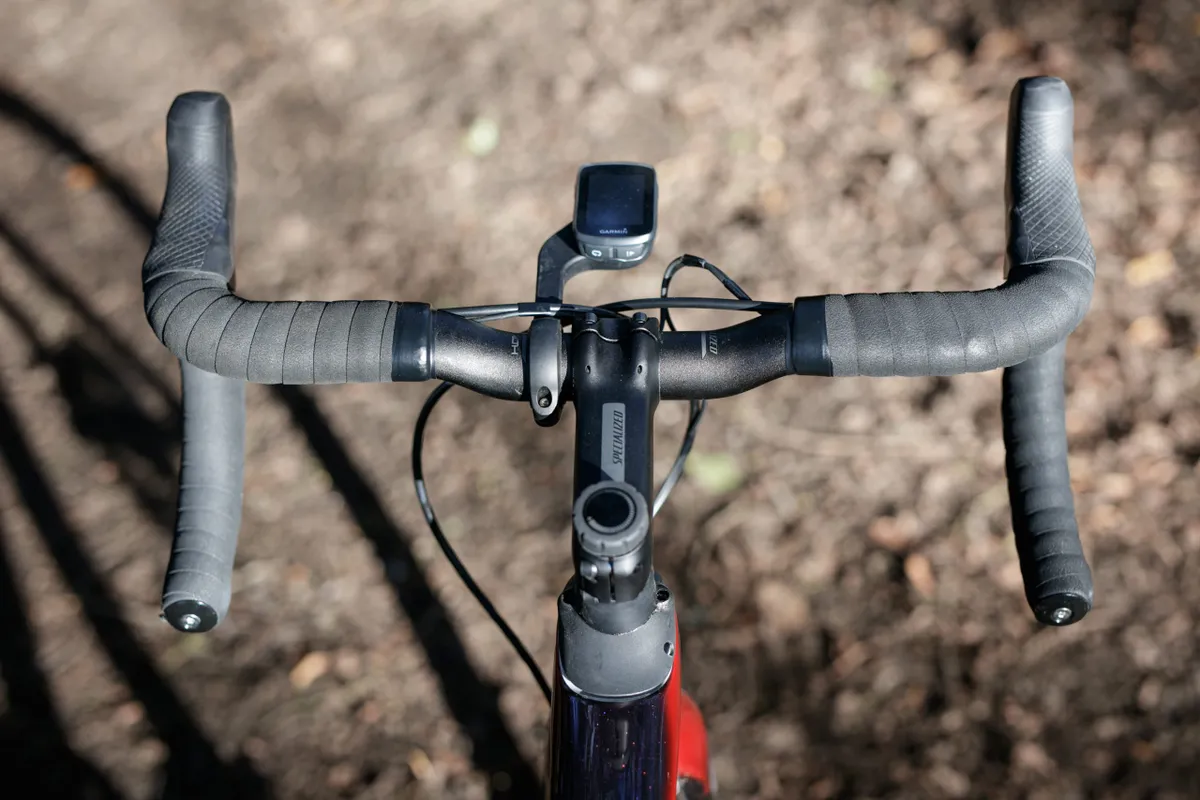
The Roubaix’s relatively short seat tube means there’s lots of seatpost on display. In other respects, there’s nothing terribly notable about the bike’s geometry, although it’s worth pointing out that, because the Future Shock suspends the bars rather than the whole front end of the bike (as on a mountain bike), the overall geometry remains the same regardless of how high you are in the shock’s travel.
- Head angle: 72.75 degrees
- Seat angle: 74 degrees
- Chainstay: 415mm
- Seat tube: 465mm
- Top tube: 545mm
- Head tube: 125mm
- Bottom bracket drop: 76mm
- Bottom bracket height: 266mm
- Wheelbase: 988mm
- Stack: 585mm
- Reach: 376mm
Why did I choose this bike?
I’m a big fan of the racier Specialized Tarmac but, as a 30-year-old with a moderately dodgy back and minimal competitive ambitions, I think I’m ready to sample a comfier approach to riding.
The latest Roubaix is, in my opinion, a much better looking bike than previous generations, wearing its towering stack height well.
I’ve long been intrigued by its unique suspension system, sceptical that it could really be justified on a bike that’s meant only for the road.
I want to find out how well it works in the real world, and see how the bike compares to dedicated all-road designs.
Specialized Roubaix Expert initial setup
The first thing I did to the Roubaix was break it. Yes, really.
I discovered, using the power of stupidity, that it doesn’t take a lot of force to damage the Future Shock adjuster. If you turn it counter-clockwise a little way past the end of the knob’s normal rotation and apply a modicum of force, it springs apart. In a bad way.
I managed to reassemble it, but soon discovered that I’d damaged the seat of the circlip that holds the knob assembly together, and it kept coming apart again.
I rode the bike for a while with the damaged adjuster carefully reassembled (and then left alone) but I lived in terror of it disintegrating on the road, and had to give in and write a grovelling email to Specialized UK explaining what I’d done.
The kind folk at the big S took the bike back, replaced the Future Shock, and returned it to me as though I wasn’t some sort of undeserving moron. I thought that was nice of them.
We generally test bikes as they come initially, but my first rides on the Roubaix were on holiday in Italy (see below) and I knew I wanted bigger tyres than the 28mm ones Specialized fits as standard.
The bike officially accepts rubber up to 33mm wide and there was a 32mm set of Continental’s new Grand Prix 5000 tubeless tyres kicking around the office, so it seemed rude not to take advantage.
With these set up tubeless after some rim tape shenanigans (I think it was damaged…) and pumped up to a supple 45 to 50psi, the Roubaix looked purposeful and ready for action.
I initially fitted my standard Speedplay Zero pedals, but have since swapped these for a more authentically Roubaix-esque set of Speedplay Pavés.
Specialized Roubaix Expert ride impressions

My first rides on the Roubaix took place on holiday in Tuscany, home to those iconic white roads, the strade bianche.
Tuscany also has endless hills and an initial foray yielded almost 1,200m of climbing over just 42km, giving me plenty of chances to assess the Roubaix’s climbing and descending prowess.
For such an expensive bike, the Roubaix isn’t stunningly light, but a stiff rear end and generous gearing make climbing a delight.
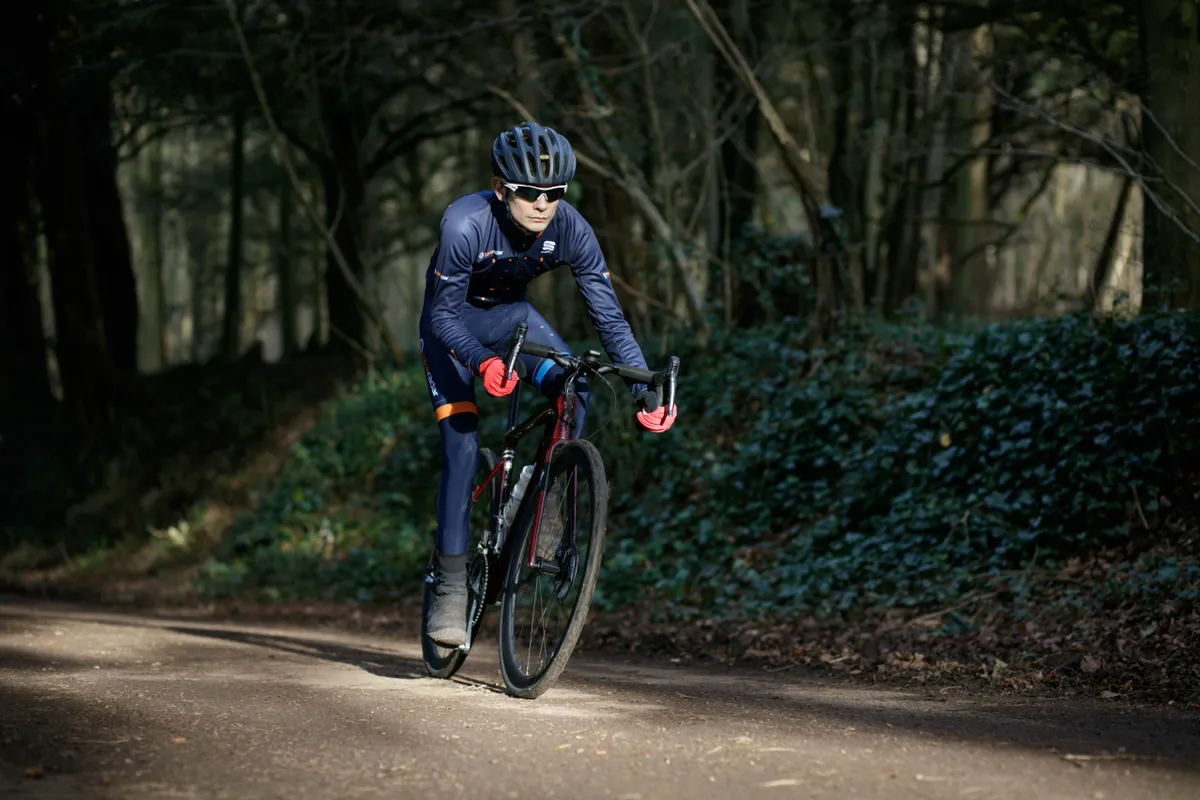
I know that your experience of the Future Shock is likely to be influenced by how much you weigh and how much power you put through your bike, but as a light rider who doesn’t pump out many watts, I’ve been hugely impressed by how little the shock interferes with the racy, precise manners of the bike with the standard spring installed.
Cruising along over rippled tarmac, its action is imperceptible, but if you look down you can see the rubber sheath flexing continuously as the shock compresses and extends minute amounts. It’s remarkably sensitive over small bumps.
What really surprised me was how well it behaved on descents. Tuscany’s hills feature an endless series of hairpins, the kind where you pick up big speed on the straights, brake hard to kill off most of it just before the bend, and then lean right over to turn through 180 degrees for a repeat effort.
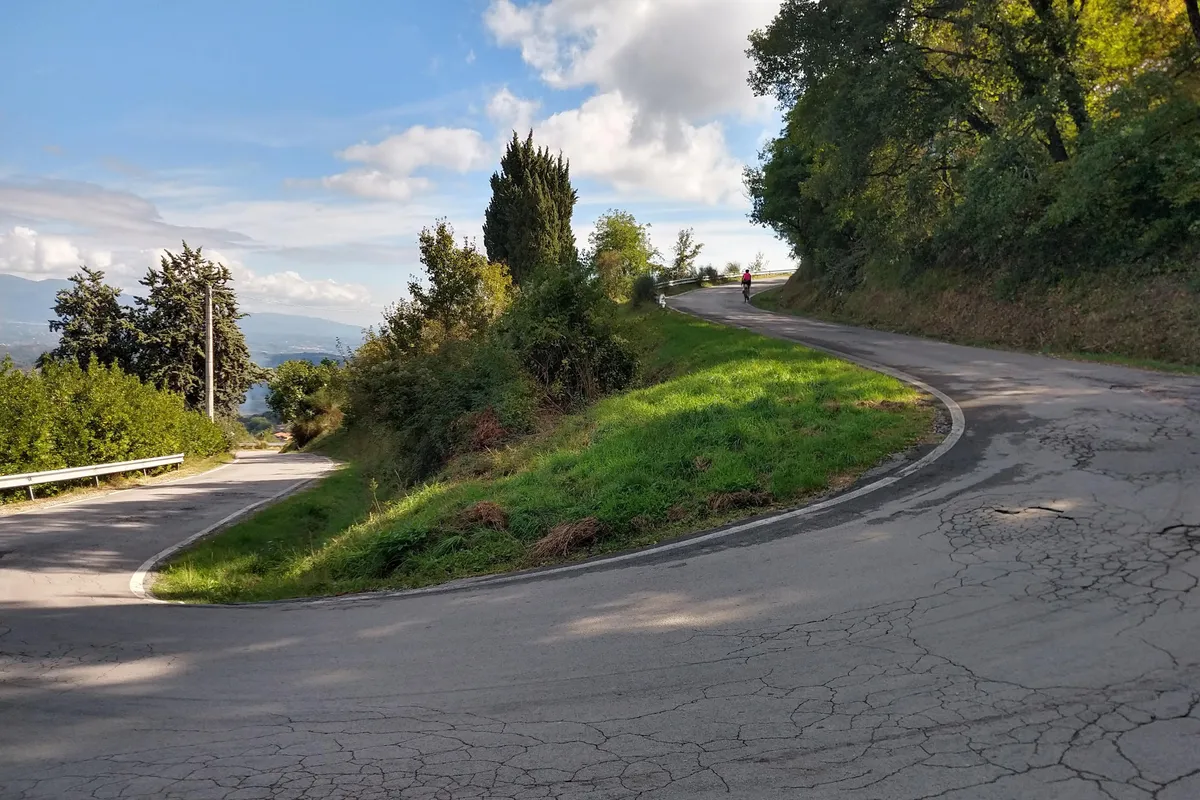
Despite leaving the Future Shock in the fully open position to do this, the bike felt wonderfully composed, with brake dive controlled enough not to be unsettling, and no hard bottoming-out.
Specialized launched the Roubaix with the tagline “smoother is faster” and I’m inclined to agree. The bike is a phenomenally good cruiser that does a sterling job of killing fatigue-inducing road buzz, particularly with the larger tyres I’ve fitted.
With no rear suspension, I wondered if the Roubaix’s ride quality would feel unbalanced, but Specialized has built so much flex into the rear end that it doesn’t.
At this point, I feel like I should say something critical about the Roubaix but I’m struggling. Okay, the cable routing up front could be neater and the steerer is an odd size so normal stems aren't a straight swap. Oh, and it’s very expensive, but the features that really set it apart aren’t primarily those that make it so costly.
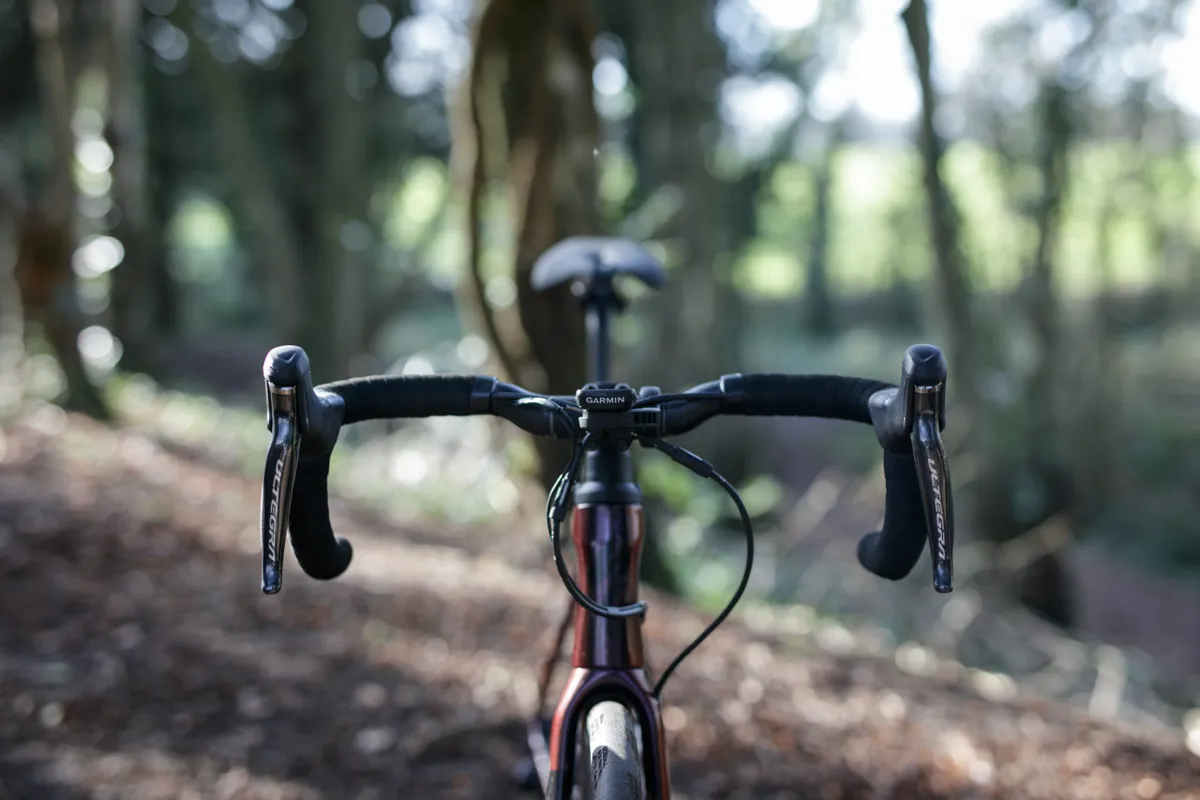
Ultegra Di2 is lovely to have for example, but the Roubaix would still be a great bike with a cheaper mechanical groupset.
Likewise, the mid-depth Roval carbon wheels are very nice, but some standard aluminium clinchers would do just fine.
Don’t worry, of course I crashed it
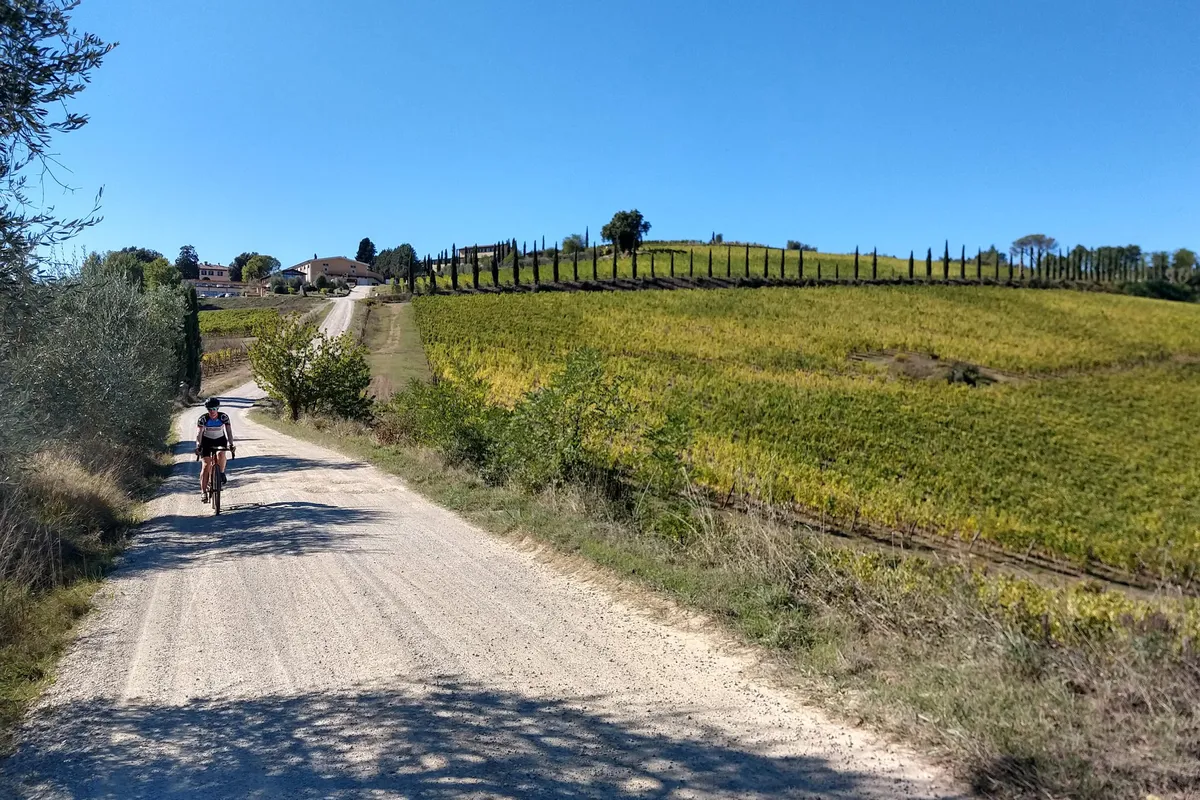
One thing the Roubaix can’t do is defy physics. A few days into the Tuscany trip, my girlfriend and I rode the short route of the Eroica vintage sportive, taking in some stunning views and lots of gravel and dirt roads.
For the most part, the Roubaix was absolutely in its element but, riding slick tyres on fine, loose gravel does come with risks, and I came down like a sack of baby fingerling potatoes on a gentle cambered climb at one point as the bike slid from beneath me, almost taking out my partner in the process. (She, I should point out, was rather smugly riding her Canyon Grail AL with more appropriate tyres.)
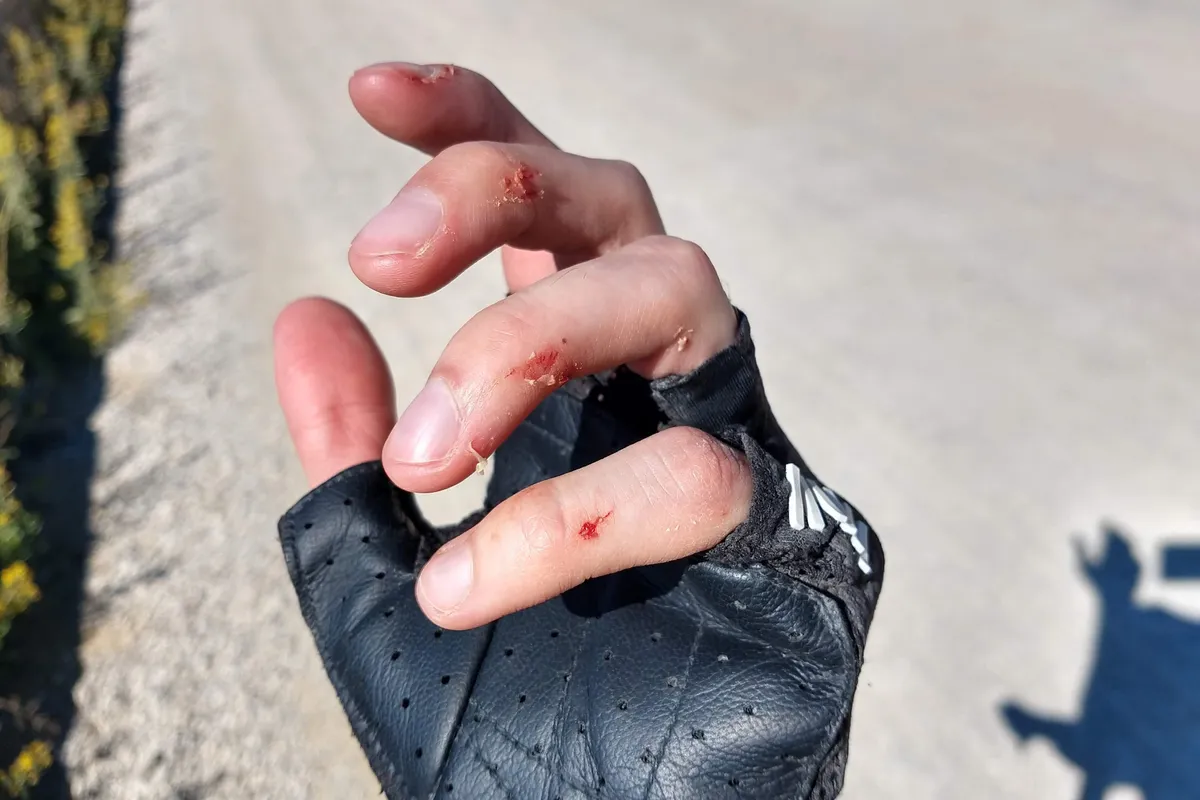
Fortunately, it was my pride that suffered the most damage, with one shifter sustaining some scratches and a bit of scuffing to the bar tape.
Specialized Roubaix Expert upgrades
With such a good spec already, I don’t feel like I’ll be making many upgrades, other than that tyre swap I did right at the start for reasons of personal preference.
I am finding the Roubaix’s reach on the short side with the stock 100mm stem, so I’m going to try a slightly longer one. The Roubaix's steerer is slimmer than the usual 1 1/8in, but Specialized has kindly offered to send a shim so I can fit my stem of choice.
I’m looking forward to spending more time with the bike, and testing the limits of its abilities off-road. The Roubaix isn’t a gravel bike, but for the gravel riding I typically do locally, I reckon it’ll cope pretty darned well.
BikeRadar's 2020 long-term test bikes
At the start of the year, every member of the BikeRadar team selects a long-term test bike to ride over the course of the following 12 months. Some choose a bike from their favoured discipline and ride it hard for a year, others opt for a bike that takes them outside of their comfort zone.
Our long-term test gives us the opportunity to truly get to grips with these machines, so we can tell you how they perform through different seasons and on ever-changing terrain.
We also use them as test beds for the latest kit, chopping and changing parts to see what really makes the difference – and help you decide which upgrades are worth spending your money on.
To see all of the BikeRadar team's 2020 bikes – and stay up-to-date with the latest developments – visit our long-term review hub.
Product
| Brand | specialized |
| Price | 8500.00 AUD,5999.00 EUR,5400.00 GBP,6000.00 USD |
| Weight | 7.9000, KILOGRAM (54) - |
Features
| Fork | Full carbon with Future Shock 2.0, 12×100mm thru-axle |
| br_stem | Specialized Future Stem Pro 100mm |
| br_chain | Shimano Ultegra |
| br_frame | Roubaix FACT 10R carbon, 12×142mm thru-axle |
| Tyres | Specialized Turbo Pro 28mm |
| br_brakes | Shimano Ultegra disc |
| br_cranks | Shimano Ultegra 50/34 |
| br_saddle | Specialized Body Geometry Power 143mm, Ti rails |
| br_wheels | Roval C 38 Disc carbon tubeless-ready clincher |
| br_shifter | Shimano Ultegra Di2 R8070 |
| br_cassette | Shimano Ultegra 11-34t |
| br_seatpost | Specialized S-Works Pave 380mm |
| br_gripsTape | Specialized Roubaix S-Wrap |
| br_handlebar | Specialized Expert Hover 420mm, 125×75mm |
| br_bottomBracket | Shimano threaded |
| br_availableSizes | 44, 49, 52, 54, 56, 58, 61, 64 |
| br_rearDerailleur | Shimano Ultegra Di2 R8050 |
| br_frontDerailleur | Shimano Ultegra Di2 R8050 |
